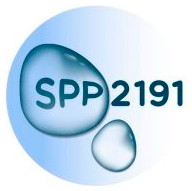Recent studies have demonstrated that membrane-less condensates assemble by liquid-liquid phase separation of proteins that share multivalency, intrinsic disorder and low complexity sequences as common characteristics. The details of the molecular mechanisms that control phase separation by these proteins inside cells have remain incompletely understood. Our previous studies have revealed the role of the disordered and repeat-rich protein Ki-67 as a surface-active agent (surfactant) on the surface of one of the largest membrane-less cellular assemblies – the mitotic chromosome. Remarkably, Ki-67’s biophysical properties are radically changed during anaphase onset. Here, we propose a multi-disciplinary research program that combines cutting-edge live cell imaging with powerful in-vitro studies to gain insight into the physicochemical properties that underlie the dynamic regulation of Ki-67’s surfactant function during cell division.
About us
Sara Cuylen-Häring
The Cuylen lab combines live-cell imaging, biochemistry and structural biology to advance our understanding of cellular organization and biophysical properties of chromosomes. We aim to further characterize the surfactant mechanism of Ki-67 and other synthetic surfactant-like proteins in vitro and in cells and we will explore whether other proteins act as surfactants at the liquid-liquid interphases of other membrane-less organelles.
EMBL Heidelberg
Meyerhofstraße 1
69117 Heidelberg, Germany

